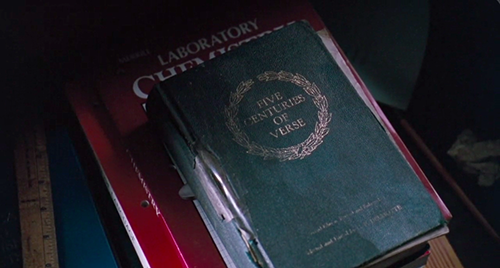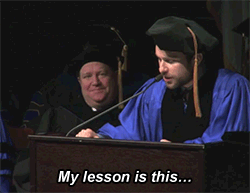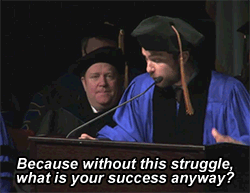Winter Sunrise Reflections





winter sunrise reflections
by Denny Bitte
More Posts from Smparticle2 and Others
Sleeping brain's complex activity mimicked by simple model
Researchers have built and tested a new mathematical model that successfully reproduces complex brain activity during deep sleep, according to a study published in PLOS Computational Biology.

Recent research has shown that certain patterns of neuronal activity during deep sleep may play an important role in memory consolidation. Michael Schellenberger Costa and Arne Weigenand of the University of Lübeck, Germany, and colleagues set out to build a computational model that could accurately mimic these patterns.
The researchers had previously modeled the activity of the sleeping cortex, the brain’s outer layer. However, sleep patterns thought to aid memory arise from interactions between the cortex and the thalamus, a central brain structure. The new model incorporates this thalamocortical coupling, enabling it to successfully mimic memory-related sleep patterns.
Using data from a human sleep study, the researchers confirmed that their new model accurately reproduces brain activity measured by electroencephalography (EEG) during the second and third stages of non-rapid eye movement (NREM) sleep. It also successfully predicts the EEG effects of stimulation techniques known to enhance memory consolidation during sleep.
The new model is a neural mass model, meaning that it approximates and scales up the behavior of a small group of neurons in order to describe a large number of neurons. Compared with other sleep models, many of which are based on the activity of individual neurons, this new model is relatively simple and could aid in future studies of memory consolidation.
“It is fascinating to see that a model incorporating only a few key mechanisms is sufficient to reproduce the complex brain rhythms observed during sleep,” say senior authors Thomas Martinetz and Jens Christian Claussen.
Opinion is really the lowest form of human knowledge. It requires no accountability, no understanding. The highest form of knowledge is empathy, for it requires us to suspend our egos and live in another’s world. It requires profound purpose larger than the self kind of understanding.
Plato, The Republic (via fyp-philosophy)
Interesting

Green method developed for making artificial spider silk
A team of architects and chemists from the University of Cambridge has designed super-stretchy and strong fibres which are almost entirely composed of water, and could be used to make textiles, sensors and other materials. The fibres, which resemble miniature bungee cords as they can absorb large amounts of energy, are sustainable, non-toxic and can be made at room temperature.
This new method not only improves upon earlier methods of making synthetic spider silk, since it does not require high energy procedures or extensive use of harmful solvents, but it could substantially improve methods of making synthetic fibres of all kinds, since other types of synthetic fibres also rely on high-energy, toxic methods. The results are reported in the journal Proceedings of the National Academy of Sciences.
Spider silk is one of nature’s strongest materials, and scientists have been attempting to mimic its properties for a range of applications, with varying degrees of success. “We have yet to fully recreate the elegance with which spiders spin silk,” said co-author Dr Darshil Shah from Cambridge’s Department of Architecture.
Read more.







Grading a slew of mediocre final papers, the grad student watches his months of arduous teaching bear little fruit.






Dead Poets Society (1989)
“We don’t read and write poetry because it’s cute. We read and write poetry because we are members of the human race. And the human race is filled with passion. And medicine, law, business, engineering, these are noble pursuits and necessary to sustain life. But poetry, beauty, romance, love, these are what we stay alive for.”


Pleasantville (1998)











Never be afraid to fail.
Watch all of ‘It’s Always Sunny in Philadelphia’s" Charlie Day’s inspiring commencement speech here.
-
 spydermaxxx451 reblogged this · 1 month ago
spydermaxxx451 reblogged this · 1 month ago -
 spydermaxxx451 liked this · 1 month ago
spydermaxxx451 liked this · 1 month ago -
 onparacosm liked this · 1 year ago
onparacosm liked this · 1 year ago -
 ravenf6 liked this · 1 year ago
ravenf6 liked this · 1 year ago -
 silentrunner203 liked this · 1 year ago
silentrunner203 liked this · 1 year ago -
 merry-moss reblogged this · 1 year ago
merry-moss reblogged this · 1 year ago -
 merry-moss liked this · 1 year ago
merry-moss liked this · 1 year ago -
 there-is-a-voice-in-my-head liked this · 1 year ago
there-is-a-voice-in-my-head liked this · 1 year ago -
 drtysx liked this · 1 year ago
drtysx liked this · 1 year ago -
 ketszeletzsiroskenyer reblogged this · 1 year ago
ketszeletzsiroskenyer reblogged this · 1 year ago -
 seraphynaa reblogged this · 1 year ago
seraphynaa reblogged this · 1 year ago -
 seraphynaa reblogged this · 1 year ago
seraphynaa reblogged this · 1 year ago -
 seraphynaa liked this · 1 year ago
seraphynaa liked this · 1 year ago -
 sandra-lovie liked this · 1 year ago
sandra-lovie liked this · 1 year ago -
 geschnetwofoundlan liked this · 1 year ago
geschnetwofoundlan liked this · 1 year ago -
 casualmusicdreamland liked this · 1 year ago
casualmusicdreamland liked this · 1 year ago -
 icamestraightfromrome liked this · 1 year ago
icamestraightfromrome liked this · 1 year ago -
 firstlawcedarprairie liked this · 1 year ago
firstlawcedarprairie liked this · 1 year ago -
 metakit liked this · 1 year ago
metakit liked this · 1 year ago -
 tisdalejunior reblogged this · 1 year ago
tisdalejunior reblogged this · 1 year ago -
 tisdalejunior liked this · 1 year ago
tisdalejunior liked this · 1 year ago -
 pathologicalpeoplepleaserrps reblogged this · 1 year ago
pathologicalpeoplepleaserrps reblogged this · 1 year ago -
 mossworldsstuff reblogged this · 2 years ago
mossworldsstuff reblogged this · 2 years ago -
 mossworldsstuff liked this · 2 years ago
mossworldsstuff liked this · 2 years ago